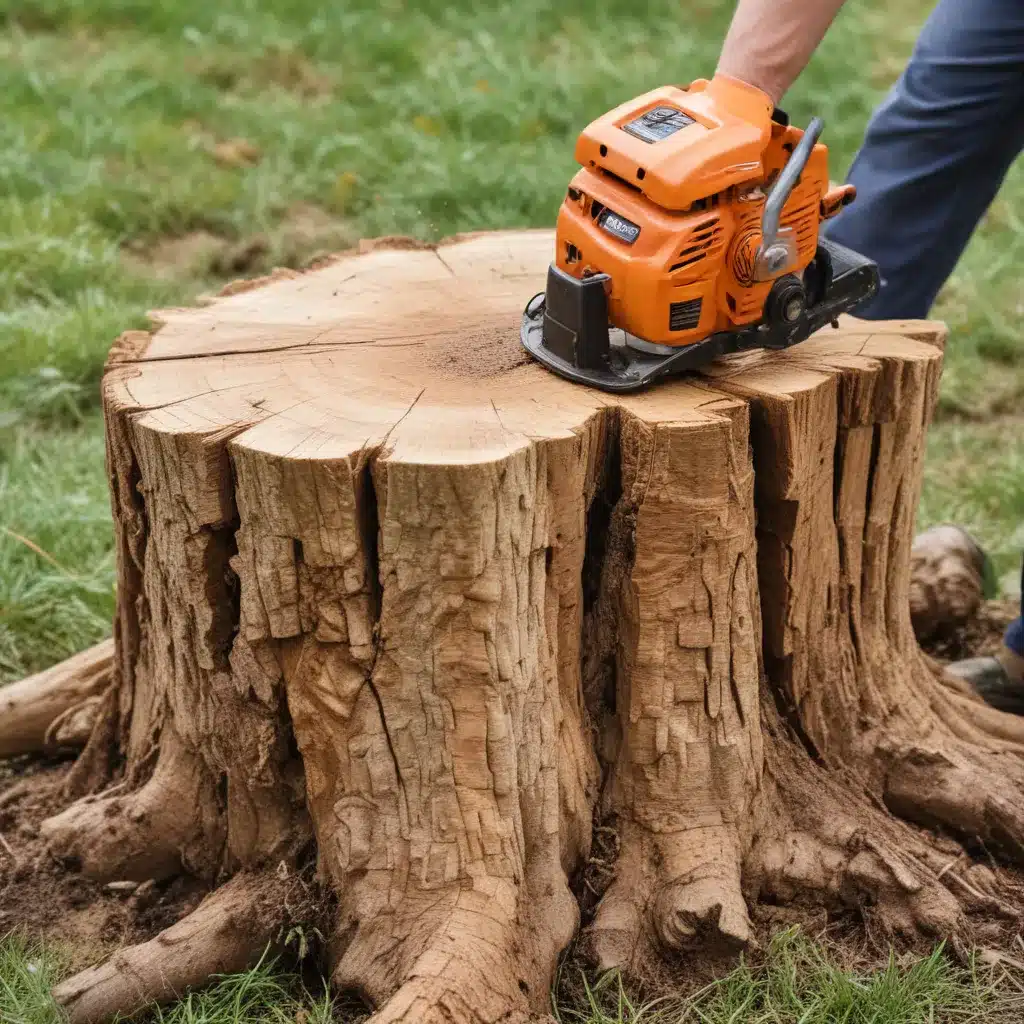
As a leading arboricultural service provider in the TriCounty region, TriCounty Tree Care understands the importance of managing tree stumps effectively. Whether you’re dealing with the remnants of a recently removed tree or an unsightly stump from years past, proper stump removal can transform your landscape and pave the way for new plantings. In this comprehensive guide, we’ll explore the fundamentals of stump grinding, equipping you with the knowledge to tackle this task confidently.
Stump Grinding Basics
Stump grinding, a widely-used stump removal technique, involves the mechanical reduction of a tree stump into smaller wood chips or sawdust. This process not only eliminates the visual blight of the stump but also allows for the gradual decomposition of the remaining root system, preparing the soil for future landscaping projects.
Types of Stumps
Stumps can vary significantly in their size, age, and composition, each posing unique challenges during the removal process. Hardwood stumps, such as those from oak, maple, or ash trees, are generally denser and more resistant to grinding than their softwood counterparts, like pine or cedar. Additionally, fresh, recently cut stumps tend to be more challenging to grind than older, partially decomposed ones.
Stump Identification
Before tackling a stump, it’s essential to assess its characteristics. Factors like stump diameter, depth, and proximity to structures or utilities can all influence the approach and equipment required. Consulting an arborist or landscape professional can provide valuable guidance on the most appropriate stump removal method for your specific situation.
Stump Removal Methods
While stump grinding is a popular and effective technique, it’s not the only option for stump removal. Alternatives include chemical stump removal, manual extraction, and even stump burning. The choice of method often depends on the size and condition of the stump, as well as personal preferences and local regulations.
Equipment for Stump Grinding
The successful removal of a tree stump often relies on the use of specialized equipment. Understanding the capabilities and limitations of various tools can help ensure a safe and efficient stump grinding process.
Hand Tools for Stump Removal
For smaller stumps or limited access areas, hand tools such as axes, mattocks, and handsaws can be utilized to manually chip away at the stump. While labor-intensive, this approach can be a cost-effective solution for homeowners with the time and physical capacity to undertake the task.
Powered Stump Grinders
Stump grinders, also known as stump cutters, are the primary equipment used for mechanical stump removal. These powerful machines, often gas-powered or electric, utilize a rotating abrasive wheel or disc to grind the stump down to the desired depth. The availability of both walk-behind and self-propelled models allows for versatility in navigating different terrain and accessibility challenges.
Safety Considerations
Stump grinding can be a hazardous activity, requiring proper safety precautions. Operators should always wear appropriate personal protective equipment (PPE), such as safety glasses, hearing protection, and sturdy work boots. Additionally, clearing the work area of any obstacles, debris, or underground utilities is crucial to prevent injury or property damage.
Preparing the Stump for Grinding
Before the grinding process can commence, it’s essential to properly prepare the stump and its surrounding environment.
Site Evaluation
Carefully inspecting the stump and its location is the first step. This assessment should consider factors like the stump’s size, proximity to structures or utilities, and the presence of any obstacles that could impede the grinding process.
Clearing the Work Area
Ensuring a clear and unobstructed work area is crucial for both safety and efficiency. Removing any nearby vegetation, debris, or landscaping elements can provide the necessary space for the stump grinder to maneuver effectively.
Stump Sizing and Positioning
Depending on the size and positioning of the stump, it may be necessary to cut or grind it down to a more manageable height before the main grinding operation. This preliminary step can enhance the overall efficiency and precision of the stump removal process.
The Stump Grinding Process
With the necessary preparations complete, the stump grinding process can begin. Proper techniques and post-grinding cleanup ensure a thorough and seamless removal of the unwanted stump.
Grinding Techniques
Experienced stump grinding operators will employ various techniques to tackle the stump efficiently. This may involve starting at the perimeter of the stump and working inward, or utilizing a side-to-side sweeping motion to systematically reduce the stump to the desired depth.
Disposal of Stump Debris
The grinding process generates a significant amount of wood chips and debris. Proper disposal of this material is essential for maintaining a clean and tidy work site. Some service providers may offer debris removal services, or the homeowner may need to arrange for the disposal of the ground-up stump material.
Post-Grinding Site Cleanup
After the stump has been ground down, the work area should be thoroughly cleaned and any remaining roots or debris removed. This step ensures a smooth transition for future landscaping projects, such as the planting of a new tree or the installation of hardscaping features.
Navigating the complexities of stump removal can be a daunting task, but with the right knowledge and equipment, the process can be efficiently and safely executed. By understanding the fundamentals of stump grinding, homeowners and landscape professionals can transform their outdoor spaces, paving the way for a more visually appealing and functional landscape. For more information or to schedule a consultation, visit TriCounty Tree Care today.


